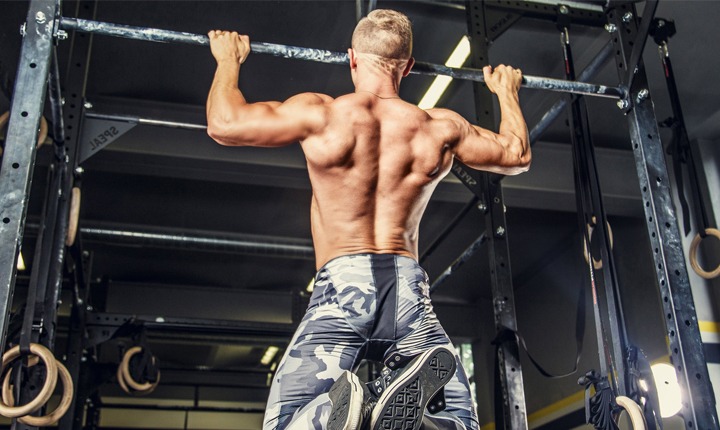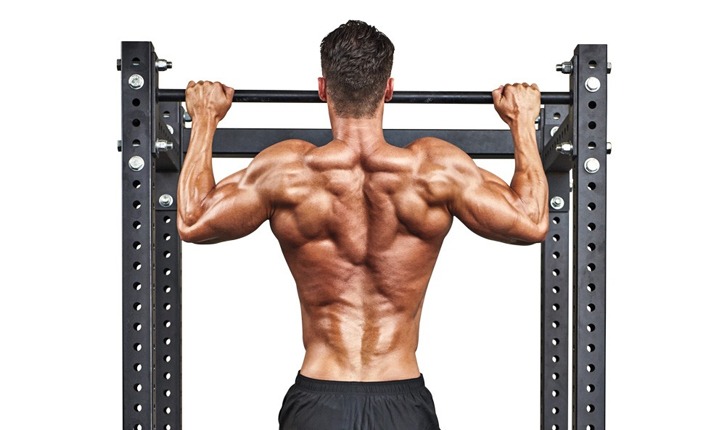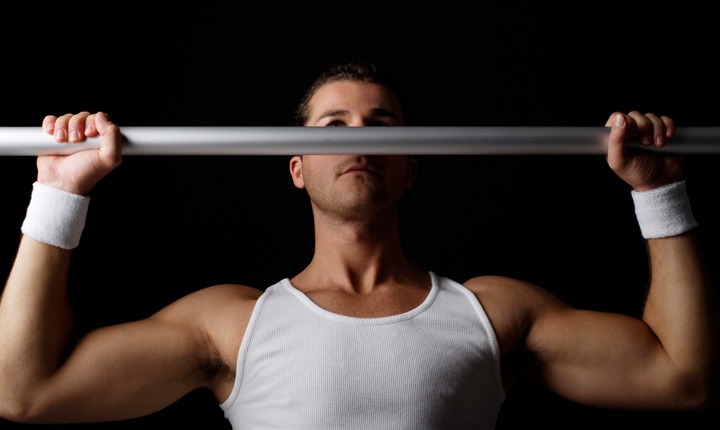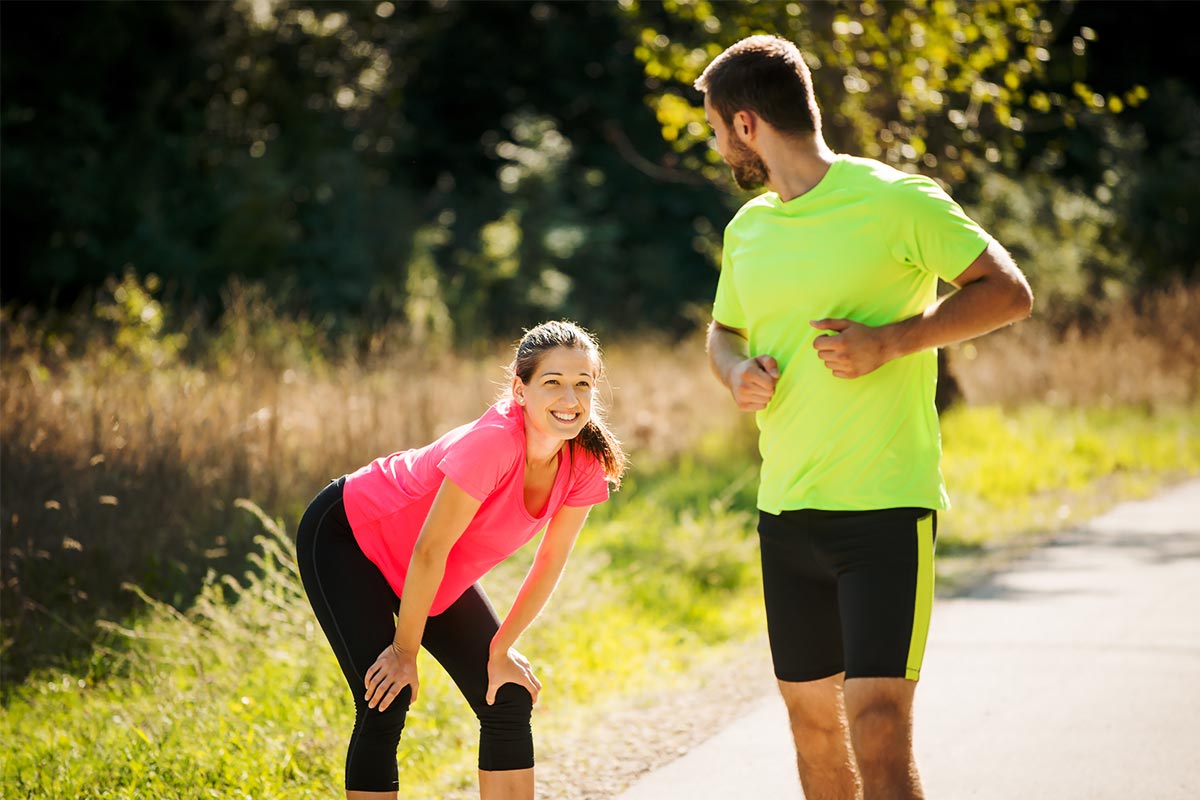Our Blog

A Detailed Pull-Up Guide – How to do Pull-ups in Proper Methods

When it comes to strengthening your upper body, nothing compares to the impact of pull-ups. One of the most popular forms of exercise out there, it is a must for every gym enthusiast. However, despite its massive popularity many people still struggle to figure out how to master pull-ups, which is why we are here to help you get acquainted with this age-old fitness regime that is as effective today as it was years ago.
How to Do Pull-Ups – A Step-by-Step Guide
Almost every best gym in Kolkata heavily recommends including this exercise in your workout regime. The basics of a pull-up guide can be mastered if you adopt a systematic approach by following the steps mentioned below.
Step 1 – Start with grabbing the bar and making sure that you grip it about a shoulder-width apart. You also need to ensure that you have a full grip over it while having your palms faced down.
Step 2 – Next, you need to raise your legs off the ground by bending your knees. Keeping your arms straight will ease the process.
Step 3 – The third step involves you pulling yourself up by pulling your elbows down to the ground. Elbows must be kept closed here.
Step 4 – The fourth step is the hardest one which basically makes pull-ups so difficult than other forms of exercise. You need to pull yourself all the way up until your chin passes above the bar.
Step 5 – The fifth step in how to do pull-ups is you getting back to your starting position. After pulling yourself above the bar, you need to lower yourself all the way down until both your arms are straight back again.
Listen, it’s totally understandable if you can’t get it right on your first few attempts. In fact, it’s completely natural since lifting up all your body weight is no mean feat.
During your initial days of trying pull-ups, you can do what is known as negatives pull-ups. This means that all you need to do is just get your chin above the bar by, let’s say, standing on a stool or a bench. Feel free to seek assistance from a friend or your gym trainer by asking them to hold your legs during the process.
Okay, now that you have a fair knowledge as to how to do pull-ups, let us point out the key focus areas you need to work upon while performing a pull-up.
Areas to Focus on for Mastering a Pull-Up
While doing pull-ups, you need to focus on the following areas to ensure you get the maximum benefit out of it while avoiding injury at the same time.
Chest
Remember, to always pull yourself up by leading through your chest. An easy way of ensuring this is to touch the bar with your collarbone every time you pull yourself up. The basic idea here is to avoid your shoulders to roll forward.
Lower Back
Your lower back must be kept neutral, meaning; it should neither be over-arched nor flat. Don’t squeeze your spinal discs or hyper-extend your arch. Keeping your ribcage down will help you stay neutral. In addition, your shoulders and knees must create a straight line when aligned.
Elbows
One major mistake people make while performing pull-ups is, when they bend their arms at the bottom when they start the exercise. You always have to ensure that your arms are straight and your elbows are locked when you hang on the bar.
Also, you need to completely lower yourself down after pulling yourself up. Naturally, since the range of motion will be longer here, you will get multi-fold benefits out of it. Don’t forget to keep your elbows close to your torso. To be specific, your elbows should touch your lats or your ribcage should point towards a 45° angle.
Grip

Having a good grip helps make your pull-ups smooth and functional. The main thing you need to focus on here is to ensure that you put your thumbs around the bar. In addition, squeezing the bar tightly would help from you slipping off it.
What essentially works here is that the tighter you squeeze the bar, the more your shoulders and arms get contracted, which essentially means the more strength you gain and the easier the pull-ups become.
Another trick to follow here is to hold the bar high in your hands while closing your fingers. Keeping your palms face up will target your lats and upper backs.
Head

Make sure you always look forward while performing this exercise. Contrary to popular belief, do not look up at the bar or the ceiling. Not to mention, tilting your head is also a strict no-no here. Keeping your head in line with the torso is the goal here.
Following this rule will ensure that there’s no squeezing of the spinal discs in your neck. As a result, you can bid farewell to all those horrible post-workout neck pains from doing pull-ups.
Legs
Performing pull-ups with straight legs will keep your lower back neutral. The only aspect that will stop you from following this rule is low hanging power racks, which are predominant in most gyms.
You just can’t keep your feet straight on these low racks because they would inadvertently touch the ground. It is just one of those disadvantages that you have no control over. However, there is a partial solution to this problem. If you straighten your leg down as you pull yourself up, it will keep your lower back neutral. You can bend your legs as you come down.
Bottom
Before you pull yourself up for your first rep, you need to hang with locked elbows and straight arms. Stretch your lat muscles and back as much as you comfortably can. Shrug your shoulder towards the ceiling.
After taking a big breath, you need to pull yourself up by pushing your elbows down. Next, you have to lower yourself until you see your arms are locked again.
Different Variations of Pull-Ups
Diversity in fitness is extremely essential to help get rid of a sense of boredom. Thankfully, we have a bunch of variations in pull-ups which, although are seemingly similar to pull-ups, are significantly different from them in terms of functionality. Take a look at some of them below.
Weighted Pull-ups
As you must have figured out from its name, weighted pull-up exercise means performing pull-ups with extra weight on your body. The objective here is to improve your endurance and strength and increase your overall muscle mass.
To perform this, you have to use a dip belt. It is a type of belt with plates that comes with a chain. You can tie this belt around your waist. The chains will reach the holes of your plates, and it has to be hung between your feet to the belt around your waist.
Chin-ups
Chin-ups are almost as same as pull-ups. The only difference is that in case of chin-ups, you grip the bar with your palms up rather than keeping them faced downwards. Technically speaking, chin-ups are easier to perform since they make use of your biceps more. They are an absolute favorite of those who prefer having bigger arms.
Lat Pull-downs
In the case of lat pull-down, you need to hold the cable bar just like you hold the bar while performing a pull-up. Make sure that when you sit on the bench, you have your thighs blocked underneath. Follow this by pulling the cable bar towards your upper chest while bending your arms.
Lat pull-downs are easier to perform than pull-ups because you get to put less weight here than what you actually weigh. In contrast, pull-ups force you to lift your entire body weight which can be pretty intimidating for a beginner.
Assisted Pull-up Machine
Assisted pull-up machine is an exercise machine that helps you perform pull-ups. To set it up, you have to grab the handles just like how you hold the bar during pull-ups. You then have to rest your knees on the designated knee padding.
As the machine lifts up the knee padding, you need to pull yourself up. To be specific, the machine helps you on your way up by making use of counter balance-weight. To get more help in pulling yourself up, you need to set the weight higher up.
Now, although this sounds exciting and easy, avoid it as much as you can since it is not as effective as actual pull-ups. This is because you are resting on a platform when you are using it. As you are not balancing yourself, you are using fewer muscles. Your lower back and abs are basically not getting worked up at all. In addition, you are not stretching yourself.
Summary
Pull-ups are a great source of gaining upper body strength. This is why it is a mandatory component in almost every kind of workout regime. But if you don’t have proper knowledge of how to do pull-ups, you will end up jeopardizing your health since you will gain no strength, and lose all your energy, all the while making yourself susceptible to injury. Thus, following a systematic, planned, and a safe approach will help you to achieve more and you will end up witnessing positive results in your body.







